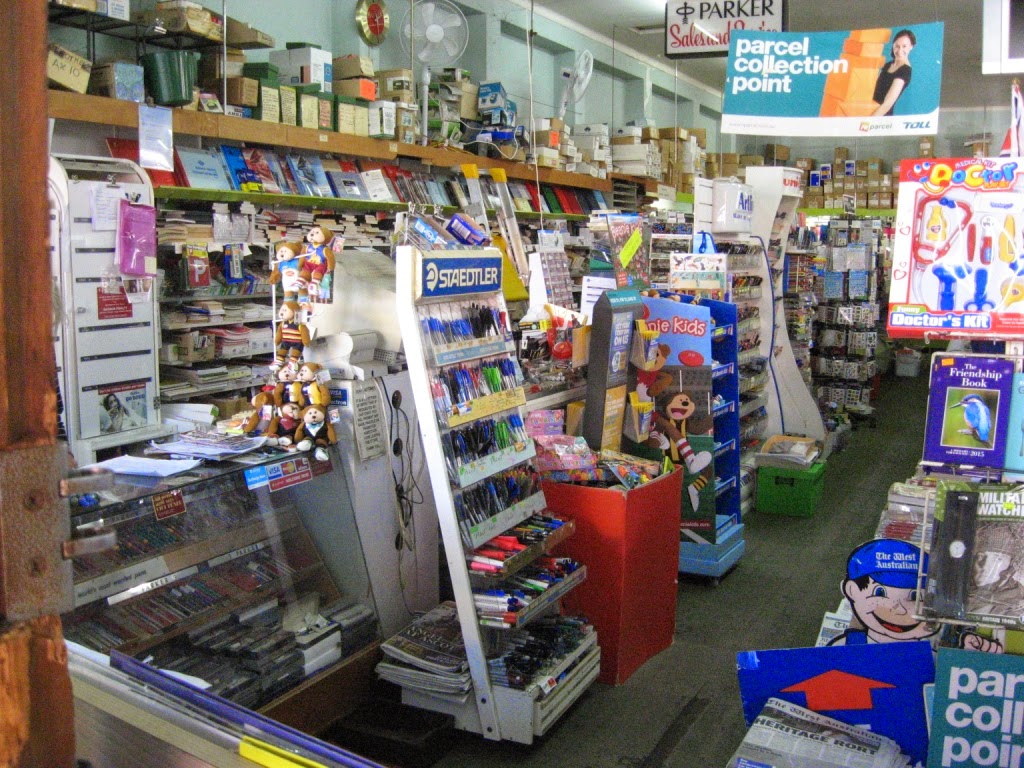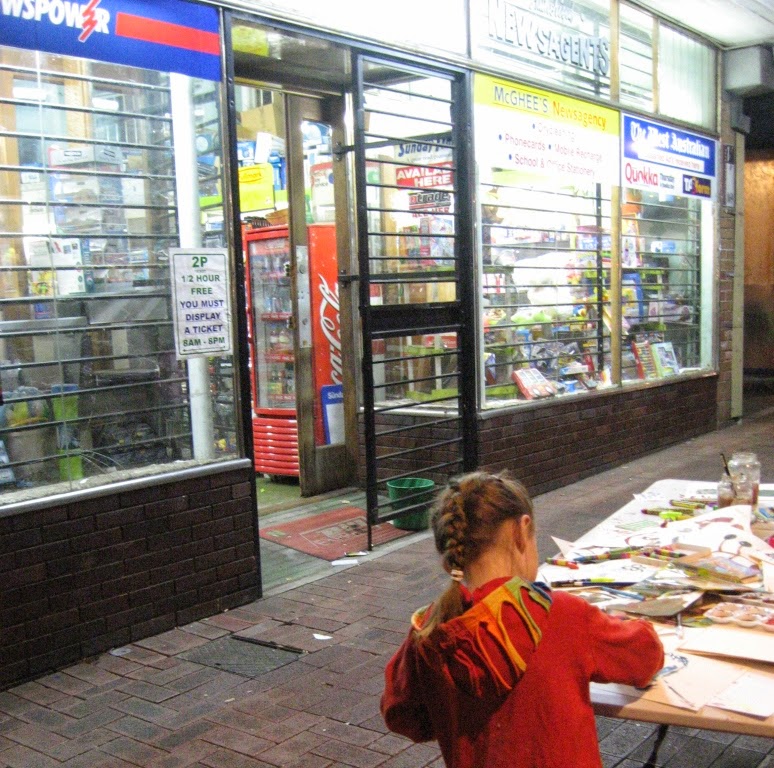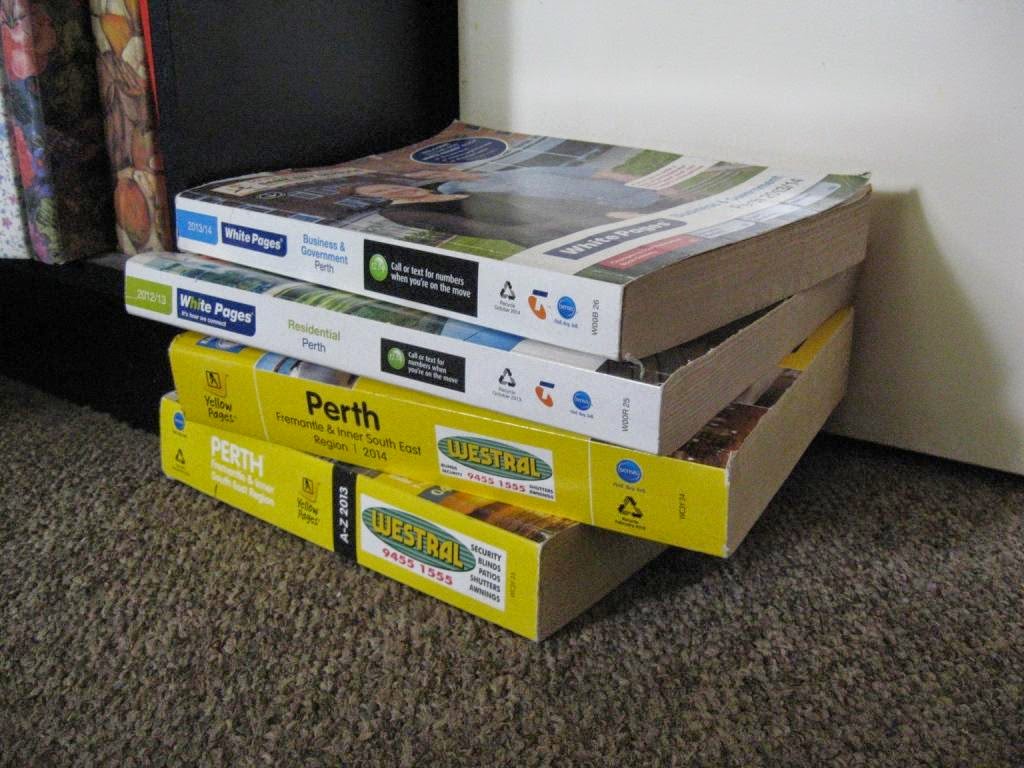Recently we went to visit Eva's school for next year and were given our
'booklist' for her first full-time school year ('Pre-Primary', in our
system). We have committed to buying our school supplies locally,
beginning with this list, and to ordering only what we actually need.
A 'booklist', for the uninitiated, is a list of stationery items that Eva is expected to bring with her on the first day of school, and does not actually include books. It is written with the sort of language you might find on a shopping docket (eg "Pencil Clrd Faber Castell Junior Tri') and the one we received added up to around $90.
It also carried the company branding 'OfficeMax' and instructions for how to go to this company's website, enter the school name and password, click about three buttons (including credit card details) and have the whole list delivered to your door for a mere $8.95 postage (earlybird) or $18.95 (normal people who don't think about this until after Christmas).
OfficeMax is an American-owned multinational corporation. Last year there were protests in South Australia when the company was awarded the contract to supply that State's education department's stationery needs, ousting a local cooperative of newsagents that had been supplying for 40 years, with an estimated 30% job loss within the cooperative as a result.
We also have a fantastic local newsagent, McGhees, owned and run by local people. It might appear smaller than, say, an OfficeWorks store, but McGhees has a much wider range of products: because there is no corporate imperative to chuck away things no longer trendy, and shelves can carry one or two copies of ten or twenty different options, rather than fifty identical copies of the one or two items currently in favour.
Initial Time: Eva and I have started going for regular bike rides together, and this newsagent is a perfect distance and difficulty ride for her at present, so we incorporated our visit into a ride. It took me about five minutes talking to the assistant to give her a copy of our list (having crossed off the items we already have at home) and leave our details. They will call us when the order arrives and we will return to pick it up. If it was not part of our bike ride, the whole exercise may have meant half an hour (two fifteen minute trips) to arrange. But the whole point of buying local is that it is, well, local, so it is likely to be on your way to somewhere else rather than a special trip.
We also placed the order for another family attending the same pre-primary with whom we share buy-local values, so that family's time commitment was zero.
If
you happen to live in the same area as us, McGhees has copies of
the booklists for all local schools, so you don't even need to remember
to take yours with you, and could place an order over the phone (this probably applies to your local newsagent wherever you are).
Initial Cost: McGhees did not have pricing yet for next year, but assured me they generally come close to OfficeMax's quoted prices. Plus there is the cost saving on delivery charges.
Selecting only what we don't already have saved us about $10. The list might be hard to interpret, but its worth checking: do you really need another library bag? Another pencil case? Eraser? Ruler? Calculator? Lots of stationery items last a lot longer than one school year.
Ongoing time or cost commitment: We have committed to this for the duration of our school parent years: Half an hour a year for the next sixteen years. Eight hours between now and 2030. I reckon we can wear it, even if it blows out to (gasp) double that.
In future years, when I know more parents at the school, I hope to be able to place orders on behalf of a greater number of families, which may involve a little time organising a small collective effort.
Impact: Mega corporations are squeezing out local businesses everywhere. I recently read a fantastic article in The Monthly about the duopoly of Coles and Woolworths in Australia, which covers most areas of basic shopping, including stationery, and is squeezing both producers/suppliers and the small-business competition. An estimated 40% of all Australian retail spending goes to businesses owned by either Woolworths or Wesfarmers (Coles). With stationery, in addition to items available at actual Coles and Woolworths stores, it helps to remember that OfficeWorks, Target, K-Mart and Big W are also owned by the same two companies. Add to that the incredible dominance of foreign-owned OfficeMax, with its branded school-supplies lists, and it is amazing any local newsagents survive. Especially as sales of actual newspapers, the former mainstay of newsagents' trade, are dropping everywhere.
Back-to-school supplies are one of the most important sources of income for newsagents and other stationery suppliers. If we all choose the easy-click option of the 'chosen' supplier our school gives us, these wonderful local stores are in danger of being unviable.
As I described when I wrote about supporting local toy and book stores, buying local has huge social and economic benefits for our community. I happen to know that the proprietors are supporters of the drop-in centre up the road from them, which feeds and cares for the poor in our neighbourhood. The photos above and below show Eva participating in a free art activity
that McGhees set up outside the store for the Council's annual Christmas Street Mall. These are just two concrete examples of the positive presence of a good local business.

































